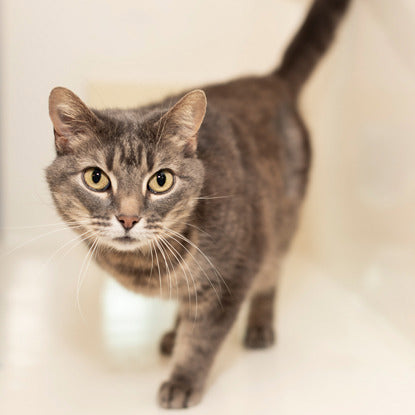
10 Fascinating Facts About Female Cats
Share
Do you love female cats and want to learn more about them? Here are 10 fascinating facts about female cats that reveal their unique physical traits and charming personalities. Whether you're a proud cat parent or planning to adopt a female feline, these insights will deepen your understanding and appreciation of these incredible creatures.
1. Female Cats Tend to Be Right-Pawed
Did you know that female cats are generally right-pawed? This means they prefer using their right paw for daily activities. While the exact reason remains a mystery, studies show that around 60% of female cats exhibit this trait. Knowing this can help you better interact with your cat and understand her natural inclinations.
2. Calico and Tortoiseshell Cats Are Almost Always Female
Ever wondered why Calico and Tortoiseshell cats are usually female? The answer lies in feline genetics. The vibrant and unique color patterns of these cats result from complex genetic interactions during fetal development. Each pattern is a true masterpiece of nature, reflecting the intricate inheritance processes that make these cats special gems.
3. They Can Have Their First Litter at 4 Months Old
It might surprise you to learn that female cats can start having kittens as early as four months old! This early reproductive capability highlights the importance of understanding feline reproductive cycles. If your cat has outdoor access or interacts with unneutered males, the risk of an unplanned pregnancy increases. Spaying is crucial not only to prevent unwanted litters but also to protect her health.
4. Female Cats Can Have Up to 19 Kittens in One Litter
Female cats can surprise us with their incredible reproductive capacity. In a notable case from 1960, a mixed-breed Burmese and Siamese cat gave birth to 19 kittens in a single litter! While this is an extraordinary example, it reminds us of the potential challenges and responsibilities that come with large litters. Ensuring that both the mother and kittens receive proper care is essential.
5. They Can Have Kittens From Different Fathers in the Same Litter
Did you know that a single litter of kittens can have multiple fathers? This phenomenon, known as superfecundation, occurs when a female cat mates with more than one male during her fertile period. Kittens from such litters can display a wide variety of colors, sizes, and characteristics, adding a layer of mystery to feline reproduction.
6. Female Cats Have a Longer Life Expectancy
On average, female cats enjoy a longer life expectancy than male cats. This can be attributed to various behavioral and biological factors, such as the lower levels of testosterone in females. Male cats, influenced by testosterone, are more prone to territorial fights and confrontations, which increase their risk of injuries and diseases. Female cats tend to be more peaceful, reducing these risks.
7. They Live Shorter Lives if Not Spayed
Unspayed female cats generally have a shorter lifespan compared to spayed ones. Studies show that spayed cats live 39% longer than their unspayed counterparts. The increased risk of pregnancy-related diseases and the likelihood of developing ovarian and uterine cancers are significant concerns. Spaying your cat is a vital step in protecting her long-term health.
8. Female Cats Take Longer to Be Adopted
Sadly, female cats often take longer to be adopted compared to male cats. This may be due to concerns about potential pregnancies or the misconception that female cats are less affectionate. In reality, female cats can be just as loving and loyal as males. If you're considering adopting a cat, don't hesitate to choose a female. You'll be providing a wonderful home to a deserving animal.
9. The Hunting Instinct and Maternal Care
Female cats have a sharp hunting instinct, passed down from their wild ancestors. But it's not just about hunting for food—they also display incredible maternal care by teaching their kittens essential hunting skills. This connection between hunting instincts and maternal care is truly remarkable and a testament to the deep bond between mother cats and their offspring.
10. The Mystery of Heat Cycles and Reproductive Care
The heat cycle of female cats is a fascinating enigma. During this time, they exhibit unique behaviors, including intense vocalizations and restlessness. Understanding this cycle allows us to better care for our cats, ensuring they are comfortable and well-supported during these periods. Delving into this aspect of a cat's life offers a deeper understanding of the amazing world of felines.
By understanding these captivating facts about female cats, you'll be better equipped to care for and appreciate your feline friend. Whether you're an experienced cat owner or considering bringing a female cat into your life, these insights will enhance your bond with these extraordinary animals.
